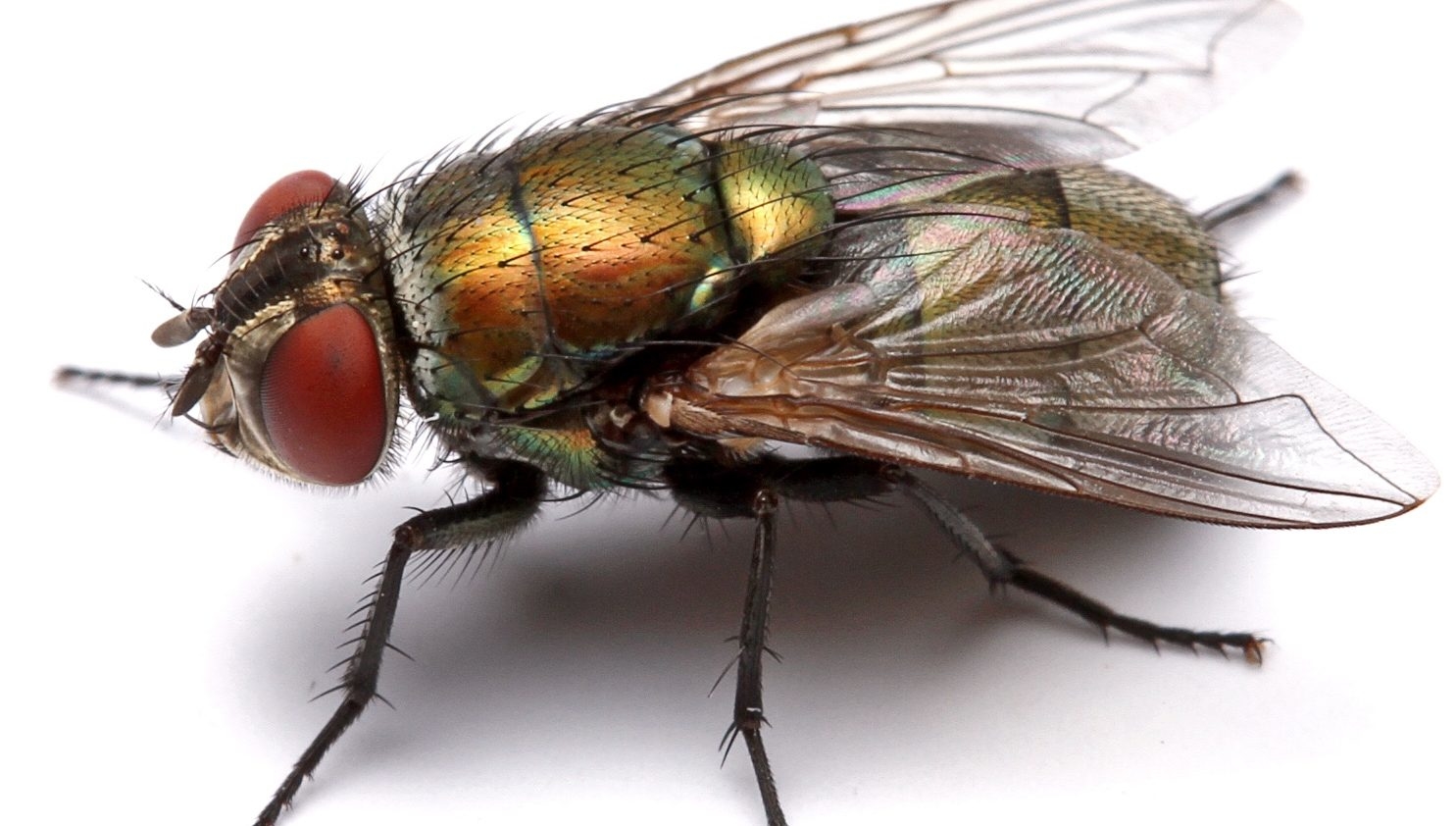
By identifying a gene indispensable for males’ survival in a devastating livestock pest, North Carolina State University researchers have shed new light on the evolution of fly chromosomes. What they found could have important implications for genetic pest control.
In a paper published today (June 7) in the journal Current Biology, entomologist Max Scott and his colleagues outline findings of a recent DNA sequencing and bioinformatics study of the Australian sheep blowfly’s X chromosome. The study supports an earlier hypothesis that the fourth chromosome of the much-studied fruit fly Drosophila melanogaster is derived from an ancient sex-determining X chromosome.
Scott’s team found that of 59 genes on the X chromosome of the blowfly Lucilia cuprina, 49 mirror those in the fruit fly’s fourth chromosome. The researchers also discovered that most of these genes are modulated by a dosage compensation mechanism, which equalizes gene expression between males and females of a species.
Males have only one X chromosome, while females have two. Different animals have different means of dealing with that genetic imbalance. In human females, for example, one of the X chromosomes is inactivated in all cells. But in Drosophila, nearly every gene on the male’s X chromosome has an RNA output twice that of its female counterpart.
Because scientists know that an RNA-binding protein known as “painting of fourth,” or POF, is key to regulating gene expression in Drosophila’s fourth chromosome, Scott and his team thought a POF-like protein might be needed for normal levels of activity of genes on the X chromosome in Lucilia.
When the researchers used the CRISPR/Cas9 gene editing system to knock out the POF-related gene in Lucilia, they found that males died before they reached adulthood. In a nod to Scott’s Australian heritage, the researchers call the gene “no blokes,” or NBL. Females with the knocked-out NBL gene were fully viable and fertile.
The male mutants likely didn’t live past the pupal stage because they could no longer double the output of X-linked genes, Max said.
“We think this is part of an ancient chromosome dosage compensation system in flies,” Scott said. “We can’t say for sure, but that’s one interpretation of our data. Another interpretation of our data is that NBL is not involved in dosage compensation, but it is required for normal gene expression in the X chromosome in both sexes. Because they have only one X, males are more sensitive to the loss of NBL.”
The study not only adds to the understanding of chromosome evolution, it could also inform research aimed at developing new genetic pest control systems.
Scott said that if further research confirms that the loss of NBL has little effect on female fitness, a Cas9-based gene drive targeting NBL in the female germline could be an effective way of controlling the Australian sheep blowfly as well as related livestock pests like the New World screwworm and possibly fruit flies such as the medfly. These pests cause millions of dollars of farm losses each year.
The research highlighted in Current Biology was funded, in part, through a grant from the Panama-United States Commission for the Eradication and Prevention of Screwworm (COPEG), cooperative agreements with the U.S. Department of Agriculture’s Agricultural Research Service and start-up funds from NC State University.
A summary of the paper follows:
“‘No blokes’ is essential for male viability and X chromosome gene expression in the Australian sheep blowfly”
Authors: Rebecca J. Davis, Esther J. Belikoff, Elizabeth H. Scholl, Fang Li, and Maxwell J. Scott, North Carolina State University
Published: June 7, 2014, in Current Biology
Summary: It has been hypothesized that the Drosophila fourth chromosome is derived from an ancient X chromosome. In the Australian sheep blowfly, Lucilia cuprina, the heterochromatic X chromosome contains few active genes and orthologs of Drosophila X-linked genes are autosomal. Of 8 X-linked genes identified previously in L. cuprina, 6 were orthologs of Drosophila fourth chromosome genes. The X-linked genes were expressed equally in males and females. Here we identify an additional 51 X-linked genes and show that most are dosage compensated. Orthologs of 49 of the 59 X-linked genes are on the fourth chromosome in D. melanogaster. As painting of fourth (Pof) is important for expression of Drosophila fourth chromosome genes, we used Cas9 to make a loss-of-function knock-in mutation in a L. cuprina Pof ortholog we call no blokes (nbl). Homozygous nbl males derived from homozygous nbl mothers die at the late pupal stage. Homozygous nbl females are viable, fertile and live longer than heterozygous nbl females. RNA expression of most X-linked genes was reduced in homozygous nbl male pupae and to a lesser extent in nbl females compared to heterozygous siblings. The results suggest that nbl could be important for X chromosome dosage compensation in L. cuprina. Nbl may also facilitate gene expression in the heterochromatic environment of the X chromosome in both sexes. This study supports the hypothesis on the origin of the Drosophila fourth chromosome and that a POF-like protein was required for normal gene expression on the ancient X chromosome.
Media contact: Max Scott, 919-515-0275 or max_scott@ncsu.edu
This post was originally published in College of Agriculture and Life Sciences News.